Over the past few months, we here at Sports Car Digest have been expanding beyond just covering classic sports cars into how they are bought, sold, auctioned, and/or traded around the world. As part of this, we have covered a couple of auction sites, and a classic car event that is making waves in the Concours d’Elegance scene. However, one thing that we have never really touched upon is what goes on behind the scenes of all these sites and sales.
That is, until now.
We were contacted by CarAndClassic.co.uk (alternatively CarAndClassic.com), the second largest classic car sales site in the world, and the largest of such sites in the UK and EU, with an offer we couldn’t refuse. That offer? A one-on-one interview with CEO and Director Tom Wood, about what makes his site work so well, and the hard work that goes on behind the scenes of a major sales and auction site.
A Brief History Of Car & Classic
Around the turn of the century, after the dot-com bubble had burst, the internet had settled down a little, and a tiny company called Google had just started their search engine site, Car & Classic was formed. From the very start, it was intended to be a quick and easy site for buyers, sellers, and fans of classic cars in the United Kingdom to visit to either list their cars, look for one to buy, or simply peruse the listings with dreams in their heads.
Little did they know at the time what Car & Classic was going to grow into. By the 2010’s, not only was the site pulling over 1.25 million unique views per month, it had grown beyond being UK based and was now serving the entirety of Europe, the Baltic States, and Scandinavian Arc. Millions of dollars worth of classic cars were being bought, sold, and traded through the site each year, and it now had a dedicated staff of customer service agents, network development professionals, and a dedicated server infrastructure to keep the site highly available.
In 2017, Tom Wood, an engineer by trade and a classic car collector by hobby, after a few years of continuous attempts, was finally able to buy the site and company. He had seen it stagnate a little in its development, and bought in at just the right time to reinvigorate the site, add the auction element to it, and take the site global. To say that he and his team of employees have pulled it off is a mild understatement, as under his guidance, Car & Classic is now the second largest classic car sales and auction site in the world.
Meeting Tom Wood, CEO & Director of CarAndClassic.com
Tom Wood has had many titles in his time. Engineer. Automotive tech pioneer. CEO many times. He’s even been referred to as “the next Richard Branson” when it comes to tech entrepreneurship. Yet, besides all that, he is one thing above all else: Absolutely mad for classic cars.

This is because throughout his developmental years, he was exposed to classic cars almost daily. He developed this perfect madness in one particular memory, that of helping his dad change the engine, not just the oil, the engine of a 1931 Austin Seven when he was 8 years old. He also started to learn how to drive at about the same age, and as he puts it, “It’s in the blood now.”
He bought Car & Classic in 2017, and hasn’t looked back since. It has grown exponentially under his leadership, and we were more than happy to be able to have a one-on-one with him regarding the inner workings of one of these massive sites, as he is a man with the same passion that anyone reading these lines today shares.
Interview with Tom Wood of Car & Classic
Our interviewer for the day was Simon Bertram, a content writer for Sports Car Digest and sister automotive content sites. While he is not your average classic car collector, he does know the collecting lifestyle from other hobbies. He does love documentaries, especially those that go into the Porsche, Bugatti, Ducati, and other factories about how cars and bikes are assembled, so he was enthusiastic to say the least about this interview!
Note: Portions of the full interview have been selected and edited for clarity and conciseness.
Simon Bertram (SB):
First off, allow me to thank you for taking the time out of your schedule to be able to give us this exclusive look at just what makes Car & Classic tick!
Tom Wood (TW):
My pleasure.
Simon Bertram (SB): As with all interviews that we do, it’s not just about the site and the cars on it, but also the people behind it. So, a quick history of you and your love of cars?
Tom Wood (TW):
I trained as an engineer, and I’ve been running businesses for about 15 years now. But, I’ve had this passion for cars, especially classics, since a very young age. What got me started was my dad, as it is normally people’s dads that get them into it, and I was helping him change the engine of a 1931 Austin Seven at around the age of 8. I also started to learn to drive in that car as well, so it’s in the blood.
I guess I’m lucky enough, over the past four years, to combine my passion for engineering and business with my hobby, which is classic cars, when I bought Car & Classic. We’ve seen some awesome growth since that point, so I guess I’m doing something right!
SB:
On that point in particular, what kind of growth have you overseen?
TW:
I don’t really remember how many people were in the company in 2017, but today, we have a team of about 70 all over the world. We are still centered in the UK, of course, but as part of expanding globally, we have people from as far as the USA to Australia in there.
SB:
Also, I don’t think I was changing pretty much anything except the game on my NES when I was 8 years old, so that’s a bit of a step up!
TW:
(laughs) Well, I had some help. It was more about being able to pull them apart and see how they work than anything, and it was an Austin Seven engine, so I could probably have picked it up when I was 8 as they are not very big. I’ve always loved to tinker with cars and play around with cars and engines so I’m really lucky now to be able to have a collection of classics and also help out others build their collections through my work.
Much like any of us, Tom started out like we did. Something about the automobile drew us to them. For some, like Simon, it was driving them, especially competitively, from go karts all the way up to touring-class race cars. For Tom, it was the engineering, the mechanical, “what does this lever do?” level of curiosity and interest that informed the direction of his lifelong passion with classics.
At this point, Tom went a bit more into detail about the history of Car & Classic, which is outlined at the start of this article under the “A Brief History Of Car & Classic” heading, so that part of the interview has been omitted. A point of interest did come up, however, which is that since its inception to now, Car & Classic, at least in the “For Sale” section, has always been free.
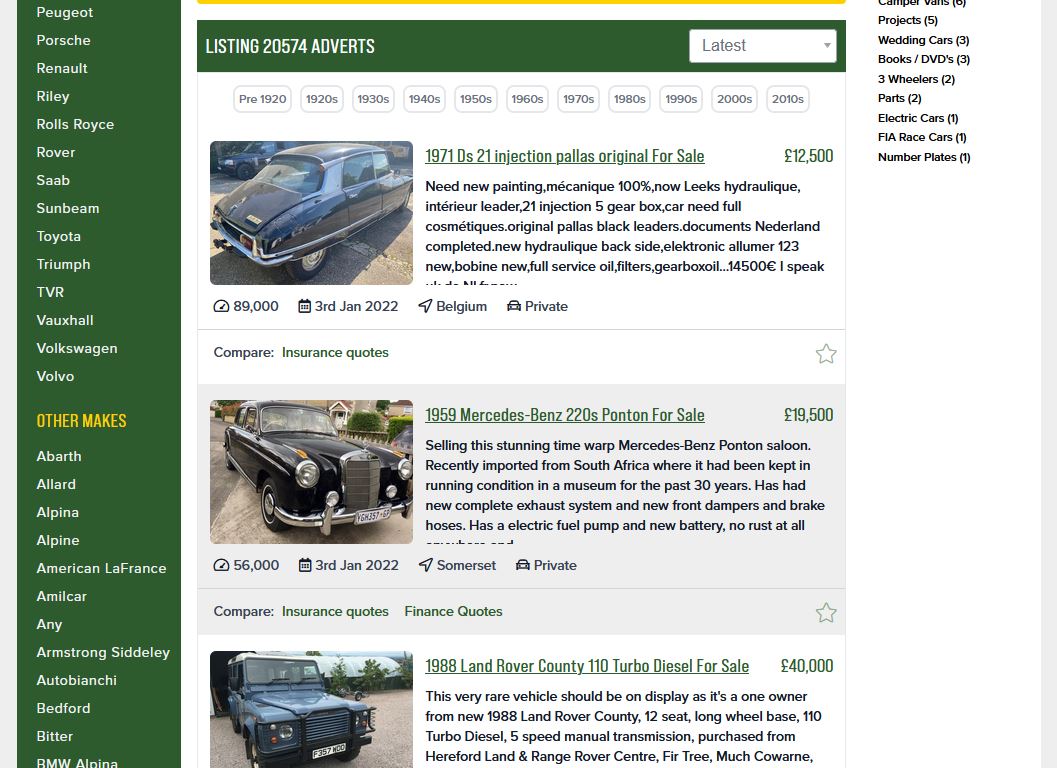
By “Free,” Tom emphasized that it was free. No one has ever been billed or charged for listing their car on the site, and the site takes no cut from any privately organized sale. The site relied mostly on ad revenue and traffic to the site in the past to sustain itself, and has since added a small fee from auctions to help sustain the development and deployment of features, as well as expand.
It is at this point that the deep dive into what really happens behind the scenes of a major sales and auction site began. After a quick overview of what we were looking for in the deep dive, Tom figuratively opened the doors to the office for us to peek through with some pretty big binoculars.
SB:
So, the first part of our deep dive is all about the surface layer of the site, what the visitor sees. What would you label the site as, in general?
TW:
First and foremost, it’s a sales listing site. We do have the auction aspect of it, but the biggest part of Car & Classic are the listings. When we do post up auctions, we have them over 7 days and at any one time, we have between 200 to 300 auctions running. We also have a small part of the overall team that promotes content to the front page of the site based on a number of factors, but, being a classic car site, it’s usually rarity, an excellent example of the model, or an auction that is really grabbing traction with site visitors.
Something that is not overly apparent on the site that we facilitate is that we have a seamless escrow system whereby Car & Classic assumes the financial risk of the sale of the car, but that’s an entire discussion to have later on.
SB:
Sounds like a great time to talk about the auction side of things, as that seems to be the more involved part of the business. The first question is either a pretty in depth one, or a short answer, which is how do you source cars to go up for auction? Do you actively search, wait for people to contact you, et al?
TW:
It’s important to realize that the majority of our business is in sales here, as we have most of the classic cars for sale in Europe going through Car & Classic. This helps with the auction side, as people come to us, they know the brand, they know the best place to sell a classic car across Europe, so they will list their car for free, through our “For Sale” ad wizard on our site that is very easy to use.
That wizard asks for all the pertinent details of the car, such as year, make, model, condition, how much you want to sell it for, detailed description of the car itself, similar to how most For Sale automotive sites work. Where our wizard deviates is that through that journey of listing their car for sale, they are given the option of “Would you like to sell your car within 7 days?”
They do have to pay a commission for that, which is 5% plus tax, same as many other auction sites out there. As part of that commission, we will come out, or send out a representative, to inspect the car, take 200 or more pictures of it, and have the car written up professionally by one of our writers. They also get the benefit of our secure escrow service, and all of this happens on average within 48 hours of selecting you would like your car to go to auction.
In that way, the vast majority of our auctions are created through sellers choosing the auction option. We also have a small team of experts that will constantly look at For Sale listings, and if they notice something special, like the 1987 Toyota AE86 we set an auction record with a little while back, they will put the listing on a hold and contact the seller to see if they want to go through an auction instead.
The last way we source auctions is through dealerships and managed collections. If we notice a classic car has been sitting at a dealership in say, Oxford, and is a desirable car but the dealership doesn’t have the internet presence we do, we’ll contact them and make them the same offer of selling the car within 7 days, same commission rate as everyone else. Managed collections are the other way around, where a private collector with an agent for their collection will have their agent contact us, and if the car meets all the criteria, basically classic, desirable, collectible, and the like, we’ll get maybe one or two cars a month that way.
As you can see, the biggest part of Car & Classic is that for the vast majority of its business, it is totally free. You take pictures of your car, describe it honestly, put up the ad, enter your contact information, and your car is listed. It is important to note that your contact information is never shown publicly on any listing. Instead, there is a “Send an email” form built into each ad, so if you are interested, an email with an @carandclassic.co.uk address is created and emailed to the seller.

By integrating the option to turn your For Sale ad into an auction while creating the ad is a bit of inspired genius, or at least that is the opinion around the SportsCarDigest office. It is inoffensive in that it is simply an option while creating your For Sale ad, not a big flashing “MAKE YOUR AD AN AUCTION!” popup, and a 5% commission plus taxes is extremely reasonable, especially when many in-person auctions set their base fees at 10 to 20% sellers commission, and 10 to 15% buyers fee, before the car even starts the process of changing hands.
That, of course, leads to the much teased-about talk of Car & Classics other major benefit for sellers and buyers, the seamless and secure escrow service.
SB:
So you’ve been teasing the escrow service for a few minutes there, I can tell it’s something you’re really excited about providing. Let’s get to it, shall we?
TW:
(laughs) Yes, it is something that I’m really proud of that we offer!
When you choose to have an auction made, and after we’ve taken the pictures and written up the car, the listing goes into what we call “pre-live” mode. This lasts anywhere from 3 to 7 days, of course agreed upon with you, where the listing is there, people can register interest in it, they can ask questions about the vehicle, some of which we answer on your behalf, with us contacting you for ones needing more specific information, and watch the auction for when it goes to live mode. This means that any prospective buyer does not pester you or contact you directly, as we do not share out your contact information.
Live is just that, live. People can bid, when the vehicle hits your reserve price, it’s considered sold, but the final value has not been determined as we won’t cut an auction short. We’re very transparent about that, you can see on each auction listing when a vehicle has not yet met reserve with a big “Reserve price not met,” or when it’s 10% or less to the price, “Reserve price nearly met” line under the bidding form.
At the end of the 7 days, the auction ends. We have a built-in anti-sniping tool, where if a sudden bid comes in within the last two to three minutes of the auction timer, the auction automatically extends two minutes. When the hammer has finally gone down, this is when the secure escrow comes into play.
The seller receives an email saying, in effect, “Congratulations, your car sold at or over your reserve price.” The buyer, on the other hand, receives an email saying “Congratulations, you’ve won the car, here are the Car & Classic escrow account details.”
For sake of demonstration, let’s say that the final bid is $20,000. The buyer then must transfer that $20,000 into our escrow account, in full. This can be done via wire transfer, international money order, or several other methods. We then put that money on hold, if needed, for the funds to clear, as some methods need from 1 to 5 days for the sending bank to actually say “yes, these funds are real and are now in your possession.”
We implement this to prevent fraudulent transfers from occurring, and, in reality, take the risk of the funds being fraudulent from your shoulders to ours. We have insurance on the escrow account, so if the funds don’t clear, you’re not suddenly without your car and $20,000 in the red.
Once the funds have cleared, we send you, as the seller, an email saying “congratulations, the buyer’s funds have cleared, here is the buyer.” You are then automatically introduced to the buyer, and it is at this point only that your account emails are shared so you can speak directly to each other. Pretty much, you don’t even get bothered by the buyer until the buyer has, in effect, paid for the car through our escrow service.
From there, the buyer can either arrange to come and collect the car in person, arrange transport of the car, and both seller and buyer have to go through the legal steps beyond our control to transfer the title of the car. I want to emphasize that we are still holding the funds in trust, so the seller knows that the buyer has actually paid the proper and total price of the auction.
After all that, both buyer and seller have to click a link in an email that is sent out that covers our legal duties and responsibilities, and that they are both happy with the condition of the car, the fact that the title is transferred, effectively it’s the “the keys have changed hands” moment of the auction.
It is then, and only then, after everything has been authorized, that we release the funds. It is also at this point that we collect the 5% commission for the auction, and if the auction was in the UK, we also collect UK taxes.
SB:
From what I gathered from that description, Car & Classic does put themselves at a position of risk in terms of being the mediator or arbitrator between the buyer and seller, both financially and in reputation. What happens when a car, for example, is sold with its condition listed as near mint, but the buyer goes to collect the car and it’s had its nose caved in from meeting a lamp post at speed?
TW:
Of course, there are times when the seller might be slightly dishonest, or the buyer, as you describe, arrives and the car has been crashed, as you said. You hit the right word in your question in that in those cases, the buyer might say “I don’t want to buy this car anymore, it’s been crashed,” or “The car is not in the condition it was represented in on the auction,” and we step in as the mediator due to having the funds in our trust.
Depending on the situation, we’ll either cancel out the sale, refund the buyer with no financial penalty, and send out someone to get updated photos and an updated description of the car for another auction, or mediate a new price between the seller and buyer.
We do, as you said, assume the position of most risk because, frankly, those commissions are what keep Car & Classic fully staffed and 99% available.
Note from the interviewer: For those not familiar with web marketing and web sales, “99% available” is a term that means that any website has multiple redundancies. In effect, it means that there are at least two, if not more, hosting server clusters, on separate power grids, a primary and a secondary. The secondary is constantly updating its database every few minutes from the primary cluster, quite often over very high speed fiber optic connections, and if that primary cluster goes “Dark” (loses power, loses network, suffers a dedicated denial of service attack, et al), the secondary cluster automatically kicks in to take responsibility and keep the website up.
This is what almost every one of your favorite websites actually looks like “in the flesh:” row upon row of server racks, each of them redundant with multiple failovers, in a climate controlled data center. Image via Shutterstock.
The term is 99% available, because there is no way to ensure 100% availability even with the best of plans and redundancies. Because of the technology and networking needed to keep this type of availability, it costs a hell of a lot of money to keep a website 99% available, often in the tens of thousands per month, and for massive sites, sometimes hundreds of thousands of dollars per month.
TW (continued):
In my opinion, we should only get paid once we’ve done a good job for you, both you and the buyer are happy, and the car has started the process of going to its new home.
SB:
As Car & Classic is starting to reach globally, I do have a follow up question about the escrow service and taxes, in what kind of tax, for example, would you collect if I sold my Ford Fiesta ST here in Canada through Car & Classic? I use my own car as an example because it is a “modern classic” thanks to the efforts of a little UK motoring show called Top Gear.
TW:
(long laugh) I remember that show, and that episode, actually.
To the point of your question, in that case, as also happens in Europe, we only collect the 5% commission, calculated to the closing rate of the currency in question on the previous business day.
SB:
So, in effect, if a car was sold on, say, the Isle of Man, you would collect the UK VAT, but if it sold in the Republic of Ireland, there would be no tax?
TW:
Yeah, exactly. We’re a UK business, so the only taxation that we need to satisfy is that of the UK government. If you’re outside of the UK, as you said in a great example the Republic of Ireland, we don’t collect tax then because there is no legal need to. The only place outside of the primary UK we would collect VAT would be the Crown Dependencies, where you provided the excellent example of the Isle of Man.
This is a refreshing take on things, if we are to be honest here. With many of the auction sites that have been running for a while, or have recently popped up (with a few exceptions, of course), the moment that the auction is gaveled, the site hands off responsibility for the transaction of funds and title and all that to the buyer and seller, and will often have an upfront fee determined by the reserve price or book value of the car in question which is non-refundable.
To have a site put in an escrow service, assume the majority of the financial risk and cover it with insurance, and act as a mediating party in disputes is definitely a different way of doing things. This, at its core, is what we think keeps Car & Classic relevant in a world where auction sites, prompted either by the fact that the global pandemic gave people the time to build their sites, or for the established ones, people listing their cars for sale to cover bills and emergency costs, are seeing massively increased traffic.
As well, Car & Classic has their reputation on the line with every For Sale ad and every auction. To collect their part of the pie, that thin 5% slice, only after everyone is satisfied with the transaction, sale, condition, legal requirements, and the like is a stance that takes, to put it bluntly, some fortitude to maintain. You absolutely have to trust in the process you’ve developed, hold true to it with every sale, and also keep the majority of the site completely free to use and trust in the traffic for ad revenue and auctions for commission revenue to keep the site going.
Web-based businesses, as a few readers may have first hand knowledge of, are not cheap to run, and the fact that Car & Classic has stayed active for just about 20 years speaks to the absolute necessity for maintaining their reputation to keep the lights on.
With the deep part of the dive over, that of the auction process through the site, we did have a few fun end-of-interview questions to let both Simon and Tom indulge in a little classic car appreciation session.
SB:
You mentioned before, and I made a note here about it, that you set an auction record with a 1987 AE86 Toyota Corolla?

TW:
Yes, we did. It was memorable to us because it showed that even if I don’t know about it, each and every genre of vehicle, from the family hatchback to bespoke race-derived sports cars, have their classics.
What happened with that specific car was that a lovely lady, who had bought the car and drove it sporadically, finally wanted to sell it. She went through Car & Classic and created a For Sale ad, and didn’t elect to go through with an auction.
It was one of our car experts that spotted the listing, and I remember them putting the hold on the listing and telling me that we had an extremely rare classic on our hands, an unmodified, completely-original-as-stock car. As much as I don’t understand why the AE86 is such a desired car, I do remember the excitement in the voice of my expert, so we reached out to her, and told her that she should definitely consider putting the car through as an auction because it could generate far more than what she was asking for it…
SB:
If you’ll indulge a little Japanese classic geekery here?
TW:
Sure!
SB:
The reason that the Toyota Corolla with an AE86 designation is so valuable is that they were a special version of the 1980s Corolla known as either the Corolla Levin in Europe, the Corolla GT-S in North America, and the Corolla Sprinter Trueno in Japan. They were special because they had longitudinally mounted engines and were rear wheel drive, instead of the transverse mounting of many Japanese small cars that were front wheel drive.
They also used one of the “Toyota Golden Trinity” of massively over-engineered engines from the 80s and 90s, the 4A-GE inline four. The other two you might have heard of, the 2JZ-GTE from the Mark IV Supra, and the 3S-GTE from the second generation MR-2. Anyways, the 4A-GE was made by Yamaha and Toyota in a joint project, much like the engine that was made for the Lexus LFA in the mid-2000s, and while it came out of the factory with 115 HP, tuners soon discovered that with just bolt ons, they could push the engine to over 200 HP reliably. It was eventually discovered that with the standard block and manifold, you could push the engine to almost 230 HP before you needed to start replacing internals.
That made the AE86 a very hot commodity in the Japanese market itself, as well as around the world in JDM imports. They also naturally have a slight oversteer handling tendency due to being extremely lightweight and the weight balance of the car being mostly forward, making them into amazing drifting and powerslide cars. This popularity exploded in the mid-1990s as well, with a Japanese manga (comic book) and anime (Japanese animation) known as Initial-D, where the hero protagonist of the series, which was all about touge racing, drove an AE86.
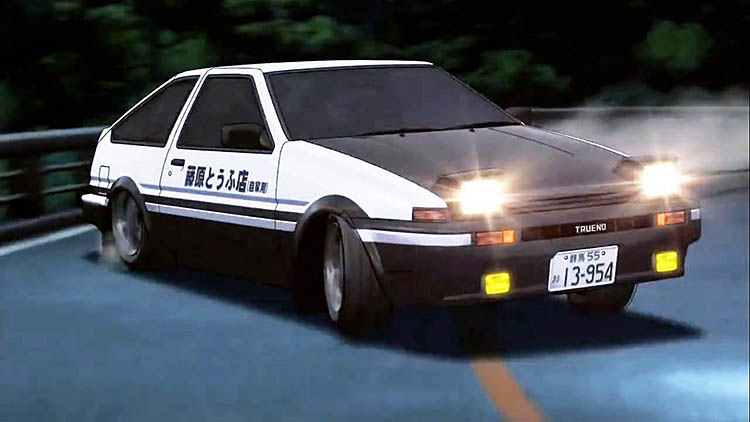
The AE86 Hachi-Roku (86 in Japanese) that launched the modern AE86 craze, the 1983 Toyota AE86 Sprinter Trueno 3-door GT-APEX Zenki (yes, that is its actual model name).
Bringing it to the point, almost every AE86 out there in the wide world of Japanese imports is modified, fettled, tuned up, or in some way changed from stock. To have a completely bone stock AE86 with an untouched 4A-GE engine at its factory power tuning is like finding a needle in a haystack, in a farmers field of haystacks, and you’d have to choose that specific field of haystacks out of a hundred other fields.
TW:
Well, that makes things make sense then! I never knew that, and now I do. Always something to learn new every day!
I guess that’s also why when that auction went pre-live, all of a sudden there were car sites, magazines even, reaching out to us about the car. We’ve rarely had that much traffic hit our site before an auction went live, and when it did, it skyrocketed past the reserve price in the first couple of hours.
When it ended, it eventually sold at over £42,200 ($57,700 USD) and it was a global sensation. That auction alone drove up our site visits beyond the normal 1 or 2 million page visits per month well past the 3 million mark! Now that you’ve explained why the AE86 we auctioned was important in terms of the history of that model, that makes complete sense too…
While this sale was not the largest in terms of money brought in or rarest cars, it is one of the most appreciated auctions of a JDM classic in recent years. The paint may be slightly faded, the exhaust pipe was in need of a little love, but it was mechanically sound and, of major importance to collectors around the world, no matter who you are, it still has its original, numbers matching engine.
As far as we are aware of here at Sports Car Digest, the only other AE86 that has ever been sold at auction that can match this one in terms of rarity and price is one that was auctioned in Japan in the mid-2000s, after having been discovered in a car collector’s massive garage/warehouse, where it had only the factory miles on the clock, and the seats were still in their 1980’s Toyota plastic wrapping. The appeal, despite it being “just a Japanese car,” can quickly be appreciated, especially for someone that wants a totally factory spec AE86, which is rarer than a modified one these days.
The conversation, sparked by the talk of rarer cars to see on the road, rotated then to Simon’s own little rare car, a 2017 Ford Fiesta ST. While not rare in any way, shape, or form in the UK and Europe, where sporty hatchbacks are far more common, it is considered a fairly rare car in North America. This led to a discussion about how things would go if Simon wanted to sell his car through Car & Classic, as a North American seller.
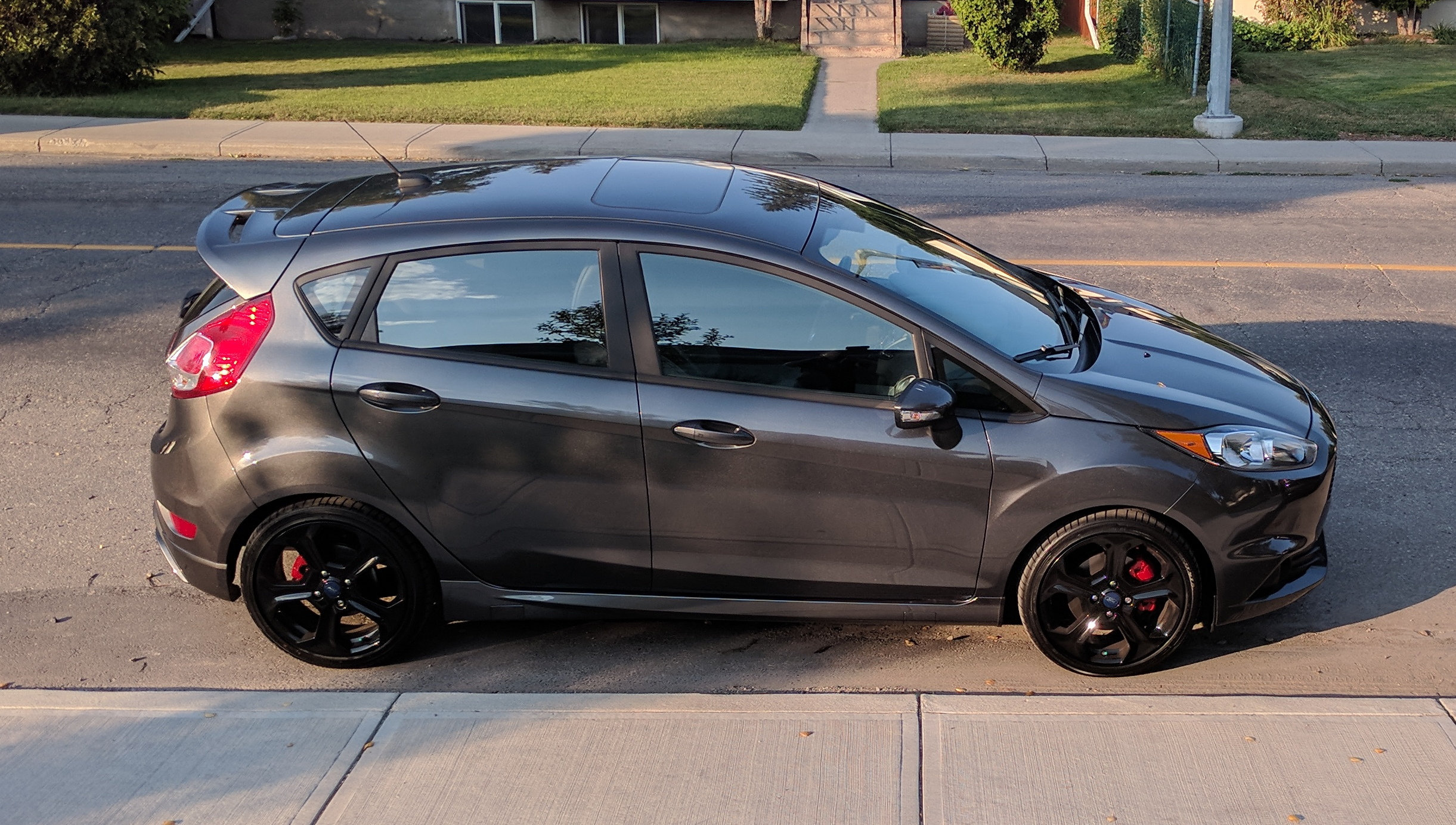
Simon’s own 2017 Ford Fiesta ST, after a wash and some TLC in the summer of 2020. A rare sight on North American roads!
According to Tom, the process is largely the same as was discussed during the deep dive portion of the interview. Simon would list the car on the website, and during listing would have the option to post the free sales ad, or have the car put through the auction process. The major difference is locale.
The online sales form that Simon would use to start selling his Fiesta ST if he wanted to
This is where Car & Classic is headed to next, as it has already, in Tom’s own words, “cornered things pretty well in Europe.” It is already a company that serves a continent’s worth of nations, and it is Tom’s dream to see Car & Classic become one of the top, if not the top, sales and auction sites in the world, and serving the global automotive collector and sales communities.
As such, in Simon’s case, he would list his location as Canada, and would put up his listing in Canadian dollars, as the site automatically takes care of conversions to Pounds Sterling and back again to local currency depending on what country you are visiting the site from. He would upload all the pictures he has or has taken of the car, list any modifications, service history, the usual.
The only hitch in the works, and something that is often left to the buyer and seller to set up but that Tom has expressed interest in helping smooth over, is shipping. If someone in the USA bought Simon’s car, it’s as easy as a drive down to deliver it and a flight back home for him. Now, if someone in, say, Germany wanted a Canadian-spec Mk VII Fiesta ST, the sale would happen as per normal, but the shipping would be, in no uncertain terms, a bit of hell to set up, as selling cars across oceans can involve major, time sensitive deadlines for delivery to and from ports, hefty insurance on the shipping, and more red tape than one could wrap a hundred Christmas gifts with.
That said, the fact that Car & Classic already takes the risk in the auction side of the site, as well as setting up an escrow service that is handled totally in house to keep it secure and able to receive and transfer large sums of money without bureaucratic interference already makes it one of the best sales and auction sites in the world. Now, all Car & Classic needs to do is actually conquer the online sales and auction world, and if there was anyone that has the drive, the background, and frankly the outright passion for collectible and classic cars to do it, it is Tom Wood.
Simon also wanted to add that despite the Bond villain level of world domination that Mr. Wood is pursuing with Car & Classic, he is genuinely an enthusiastic and pleasant CEO to talk to. Some CEOs are known for not liking interviews, others will stick to the agenda and notes and not deviate outside of business talk at all, but Tom was really outgoing and enthusiastic the moment the word “car” was mentioned the first time, and he truly is as much of a maniac about things with four wheels that go vroom as the rest of us!


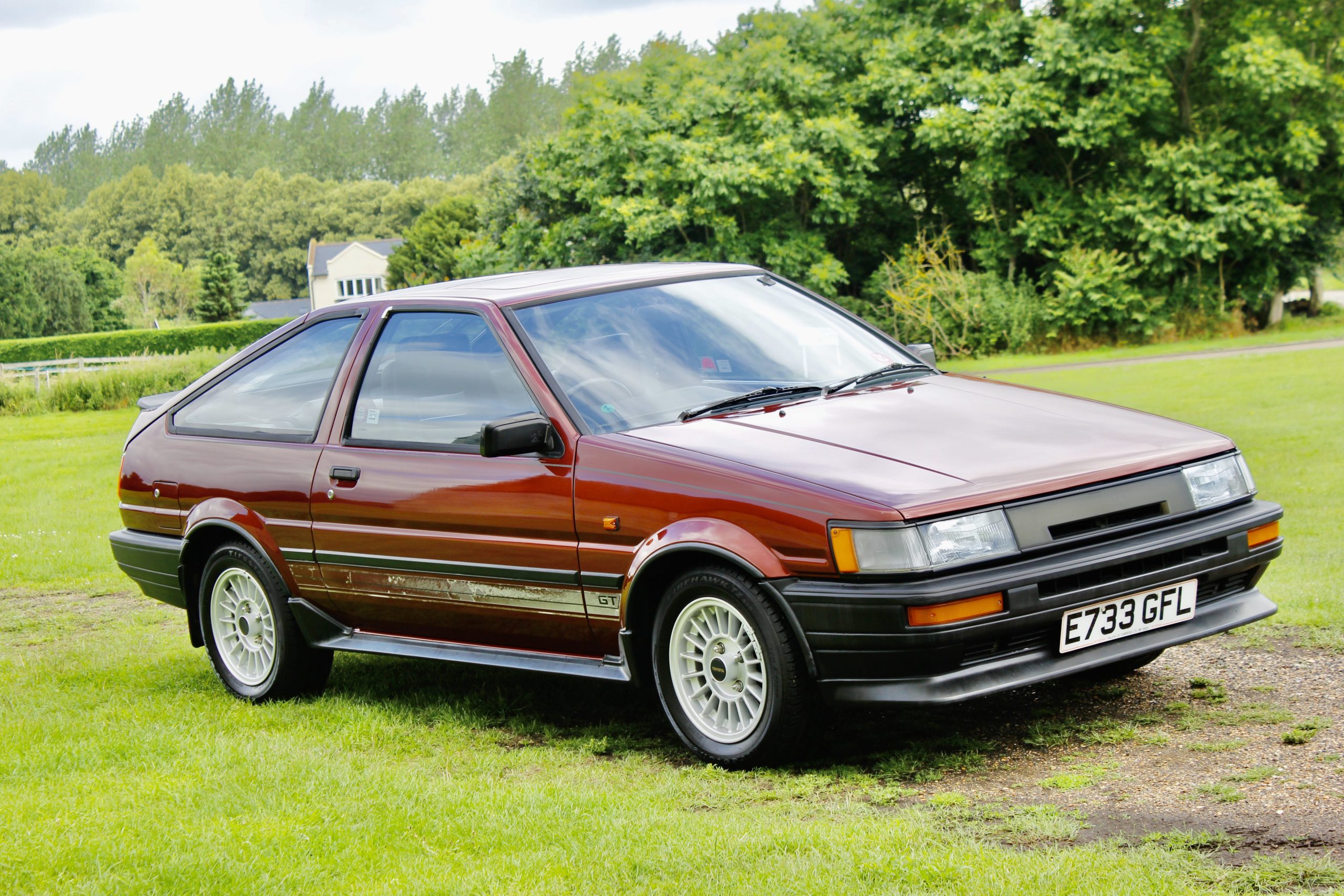




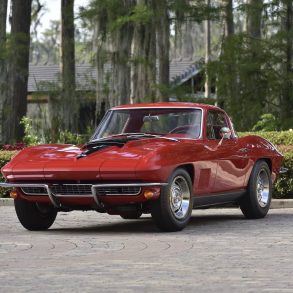

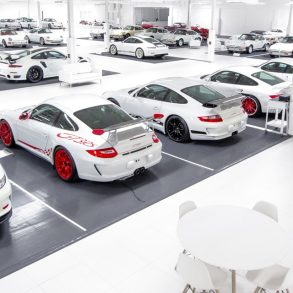



Why are the descriptions for the cars in the auction so over the top and full of irrelevant information. It really distracts from a great opportunity.